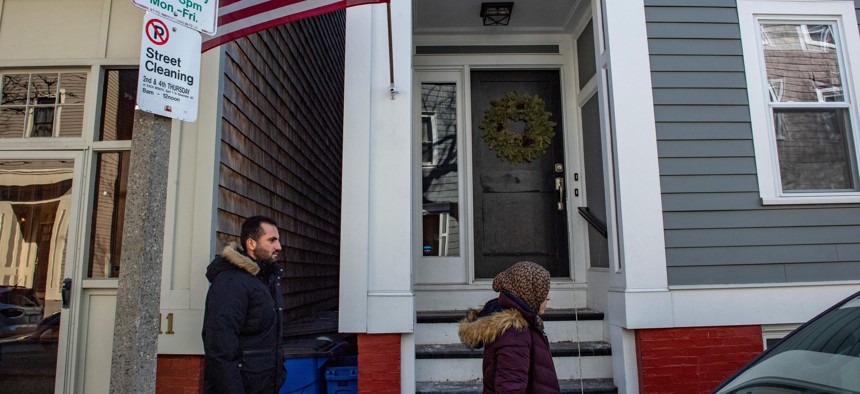Four Ways to Improve Refugee Resettlement in the US

Afghani evacuees are resettled in Charlestown, Massachusetts. JOSEPH PREZIOSO/AFP via Getty Images
COMMENTARY | Geopolitical unrest and the detrimental impacts of climate change will continue to increase the flow of refugees requiring resettlement. Here’s how state and local governments and nonprofits can effectively prepare to meet increased demand.
While the federal government determines refugee policy and sets funding levels, the success of America’s refugee resettlement program lies with state agencies, designated nonprofits and the local communities where refugees ultimately settle. As the federal government seeks to resettle up to 125,000 refugees in 2023, state and local governments will have to address the need to provide support services.
Smart resettlement leads to productive, engaged people who feel part of and contribute to their new community and country. State governments are uniquely positioned at the center of the country’s resettlement ecosystem to deliver successful resettlement. Additionally, the federal government grants states the flexibility to structure their resettlement programs based on their unique context and resources.
But since no two state programs are exactly alike it may appear as though there is a lack of common best practices. Yet, despite states operating within their own distinct policy environment, they can deploy four universal strategies to help effectively serve, support and resettle refugees across the country.
Make Creative Use of Federal and State Funding
States and resettlement agencies receive funding to assist in resettlement efforts, but these resources can arrive with little notice and local communities might need additional time to prepare for unexpected surges of refugees. States can make available resources go further by tapping into available funding pools in creative ways. For example, state and local governments may be able to use American Rescue Plan Act funding, the Centers for Disease Control and Prevention’s Public Health Emergency Preparedness Program and a range of other federal and state funding streams to enhance refugee resettlement efforts.
Lean On Agile Models and Partnerships
State and local governments should embrace a nimble, always-on posture as they may need to support an unexpected influx of refugees within a few days’ notice. While planning and preparedness for unforeseen surges are essential, state and local entities have the opportunity to choose from three predominant models to help administer refugee resettlement efforts: traditional state-administered programs, public-private partnerships and the replacement designee framework.
No one model fits every state’s needs or every individual situation. Establishing flexible and cross-functional teams that can quickly evaluate a specific resettlement situation and implement the appropriate model will yield beneficial results.
Enhance Case Management and Data-Sharing
Obtaining accurate and timely information about refugees and the available local resources is critical to making effective resettlement decisions and ensuring successful community integration. State refugee resettlement programs can also learn from other states that have broken down data silos and built robust case management systems.
For example, Utah, which mandates two full years of case management support for vulnerable refugees, built a system that enables case managers to analyze and identify gaps in service. In 2019, the program administered an outcomes-based assessment for refugees who had received two years of case management services and found that 92% of assessed refugees showed improvement in employment outcomes and 100% lived in safe and affordable housing.
Integrate Human Service Delivery with Local Communities
Leaders can leverage the power of commitment of disparate actors to rally around a common agenda and solve specific social problems. These initiatives should aim to include a broad range of stakeholders to address refugees’ immediate needs (e.g., nutrition, housing, employment services, language support and school registration) along with ongoing and long-term needs (e.g., health care, transportation, legal services, college readiness programs, adult education and child care).
State and local governments can coordinate and catalyze these collective efforts by collaborating with nonprofits and other organizations throughout their respective communities.
Lori Scialabba is a specialist executive at Deloitte Consulting LLP. She served more than 30 years in the federal government, retiring as the acting director of the United States Citizenship and Immigration Services. She previously served as the acting general counsel and deputy general counsel of the U.S. Immigration and Naturalization Service.
NEXT STORY: Tackling Rural America’s ‘Hidden’ Housing Crisis





